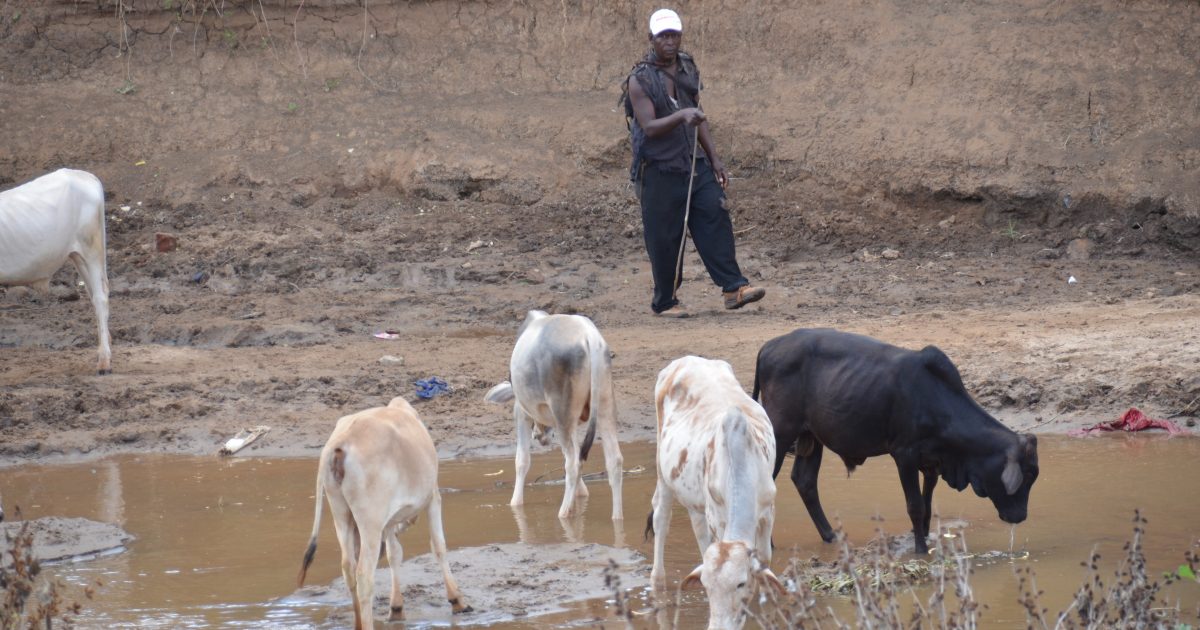The rehabilitation of the Voi River in Taita-Taveta County has rekindled optimism amongst residents in the region that the endangered resource will be protected from further degradation resulting from destructive human activities.
Mr. Charles Kuria, Kenya Forest Service (KFS) Eco-System Conservator in Taita-Taveta County, said the long-term rehabilitation program will entail intensive planting of indigenous trees in degraded riparian zones.
The planting will be done from the source in Taita Hills and along the river to the point where it drains into the Tsavo National Park.
Mr. Kuria was speaking at Mnaoni area, during the launch of a tree-planting exercise in the region.
“We have chosen to plant trees on the riparian land as a symbol of our intent to rehabilitate the Voi River eco-system by populating the banks with indigenous trees,” he said.
Voi River is the longest river in the County. In the past, environmental experts have severally warned that the 210km river is under serious threat from human activities, including unregulated sand-harvesting, brick-making and aggressive farming in riparian lands.
Recently, the River has also come under threat from the highly aggressive Prosopis Juliflora commonly known as Mathenge that has colonized vast swathes of the river.
Over the years, the volume of waters in the river had sharply declined with some areas drying completely in what is attributed to human interference with the natural flow waters.
Ironically, unusually heavy rainfalls in Taita Hills have also caused massive flooding downstream, especially in low-lying villages in Voi where thousands are displaced.
Conservationists have blamed this on interference with the natural contours of the river, including attempts to change its cause by farmers.
KFS expressed optimism of full revival of the river and called for more engagement with stakeholders to ensure its survival.
Voi Deputy County Commissioner, Mr. Daniel Nduti, noted that river’s preservation should be the responsibility of everyone and called upon the members of the public to spearhead initiatives that promoted environmental conservation.
“This River is a resource for us all and we should lead at protecting it,” he said.
Mr. Zacheaus Maghanga, Chair of Water Resource Users Association in the region, said his organization was collaborating with the Department of Lands and Environment in the County government to launch a pegging exercise along the river to delineate the riparian lands.
He stated that such an exercise would show boundaries that would guide on tree planting exercise.
“The riparian land would be clearly indicated. This will assist in knowing where the trees will be planted,” he explained.

There are locally-driven initiatives that target to complement efforts by the government towards revival of the river. Chief amongst them is the Voi River Tree Planting Project, which is supported by local conservationists and the public.
The project is experimenting on encouraging the placement of commercially viable interventions as a way of enticing the public to participate in the project.
This includes planting of vetiver grass on the Voi riverbanks to stabilize the soil and prevent it from being washed away whenever the river floods.
Mr. Maghanga said the project would also involve planting of bamboo seedlings which can be harvested when mature for sale. There will also be a drive to plant fruit trees along the riparian land.
“Farmers and other local residents can benefit from these initiatives and will participate in conserving them,” he explained.
The large-scale planting of trees in the region is expected to take off once the heavy rains start later this month.
Currently, the county has a total of approximately 80-hectares of planted trees. This involves trees in protected forest, public institutions like schools and hospitals and individual farmers’ land.
According to the forest census in 2017, the county had a forest cover of 3.6 per cent. Mr. Kuria said that stakeholders hoped to report a cover of at least four percent by 2022.
“The national target is 10 percent by 2022 and we also hope to contribute to that number by raising our targets,” he said.
By Wagema Mwangi




